- Stay Connected
 Abraham Lincoln
If given the truth, the people can be depended upon to meet any national crisis...
Abraham Lincoln
If given the truth, the people can be depended upon to meet any national crisis...
 Guildford news...
for Guildford people, brought to you by Guildford reporters - Guildford's own news service
Guildford news...
for Guildford people, brought to you by Guildford reporters - Guildford's own news service
Beekeeper’s Notes November 2017: Lunch At The Ivy
Published on: 1 Nov, 2017
Updated on: 4 Nov, 2017
Hugh Coakley keeps bees in Worplesdon. He talks about the unsung autumn hero that feeds so many birds and insects.
Even though it is autumn and getting chillier by the day, the bees are still busy flying and foraging whenever they can.
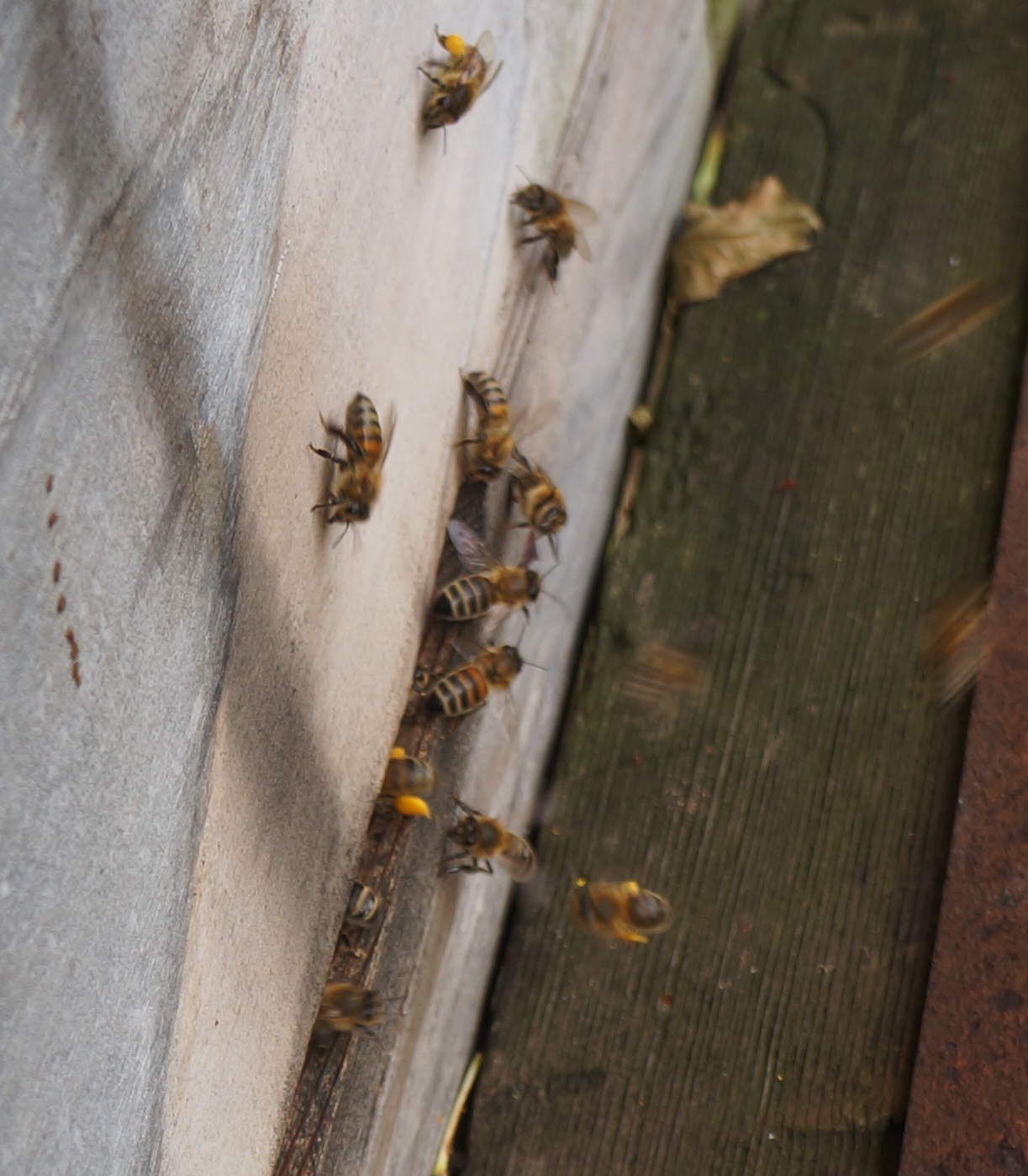
Busy hive entrance on October 15 this year with yellow ivy pollen pouring in. Click on the images to enlarge.
It has been mild through most of October so far and the bees have been really busy. But busy doing what? Can they be foraging now that the summer flowers are long past?
Research at the Laboratory of Apiculture and Social Insects (LASI) at Sussex University in 2013 shows that for the insects and bees, it is lunch at The Ivy.

Honey bee foraging on ivy. The bee is loaded up with yellow ivy pollen. The seeds, once mature, are dispersed by birds.
Ivy buzzes with insect life at this time of year.
90% of pollen collected by the bees in the autumn came from ivy. 80% of the bees seen on the ivy are collecting nectar. We know that because their pollen baskets were empty. So, not just the golden yellow of the ivy pollen but nectar as well.
The ivy flower is small and from a distance, not much to look at. Close up though it is a marvel with its globe of yellow drum sticks looking like a sea mine waiting for the unwary ship. This aerial bomb – called an umbel – is philanthropic though, just waiting to give out its valuable cargo.
Quite a nice scent as well.
It is not just bees. Over a few minutes, I photographed a number of other insect visitors. All probably very common but when they are magnified through the wonders of the digital photo, they are astonishingly beautiful.
Can any reader identify them please?
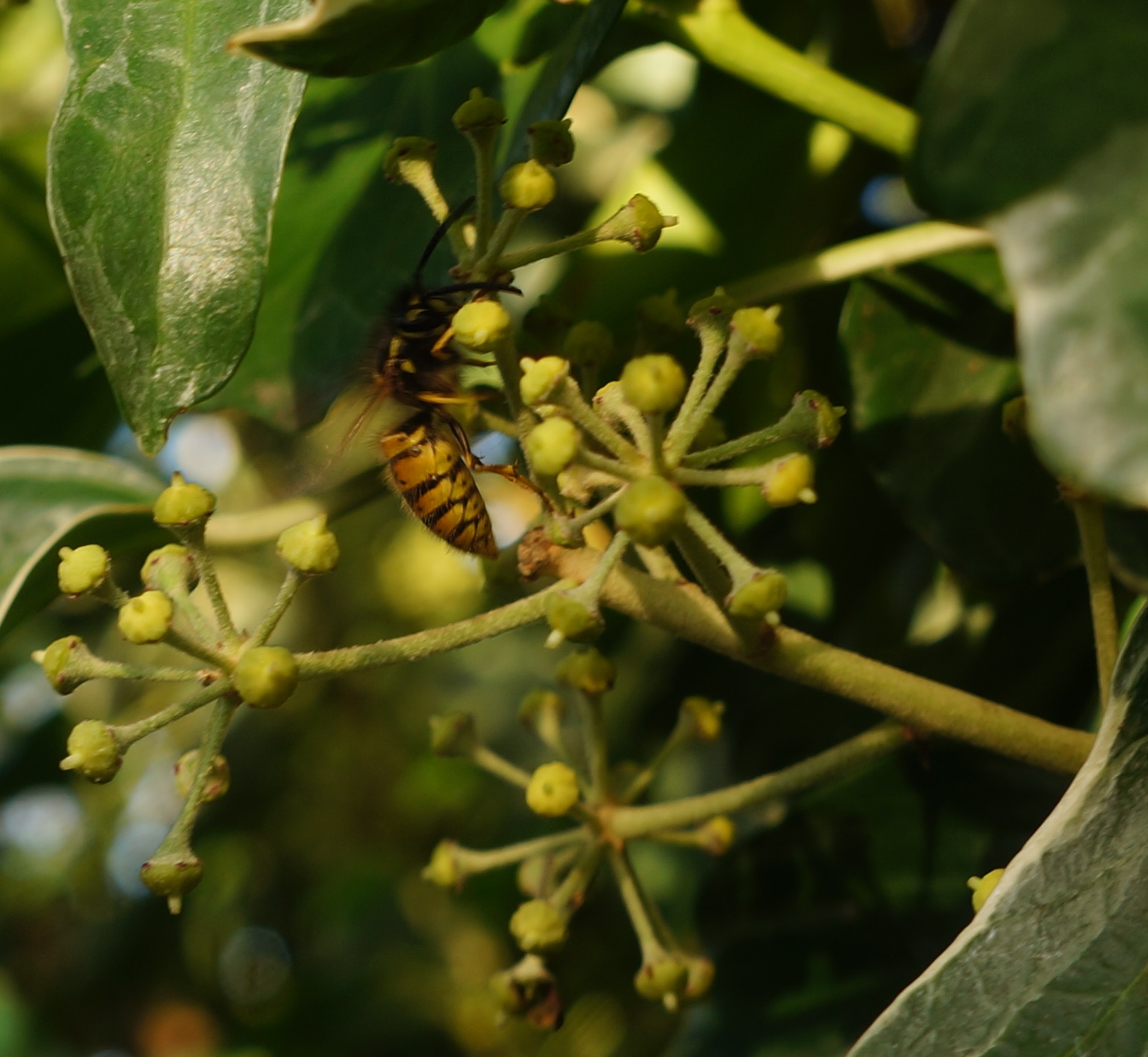
A wasp appears to be chomping on an unopened flower. I am assuming it is a wasp though it is very late in the season. Amazing articulation between the thorax and the abdomen, it almost looks like they are completley separate.
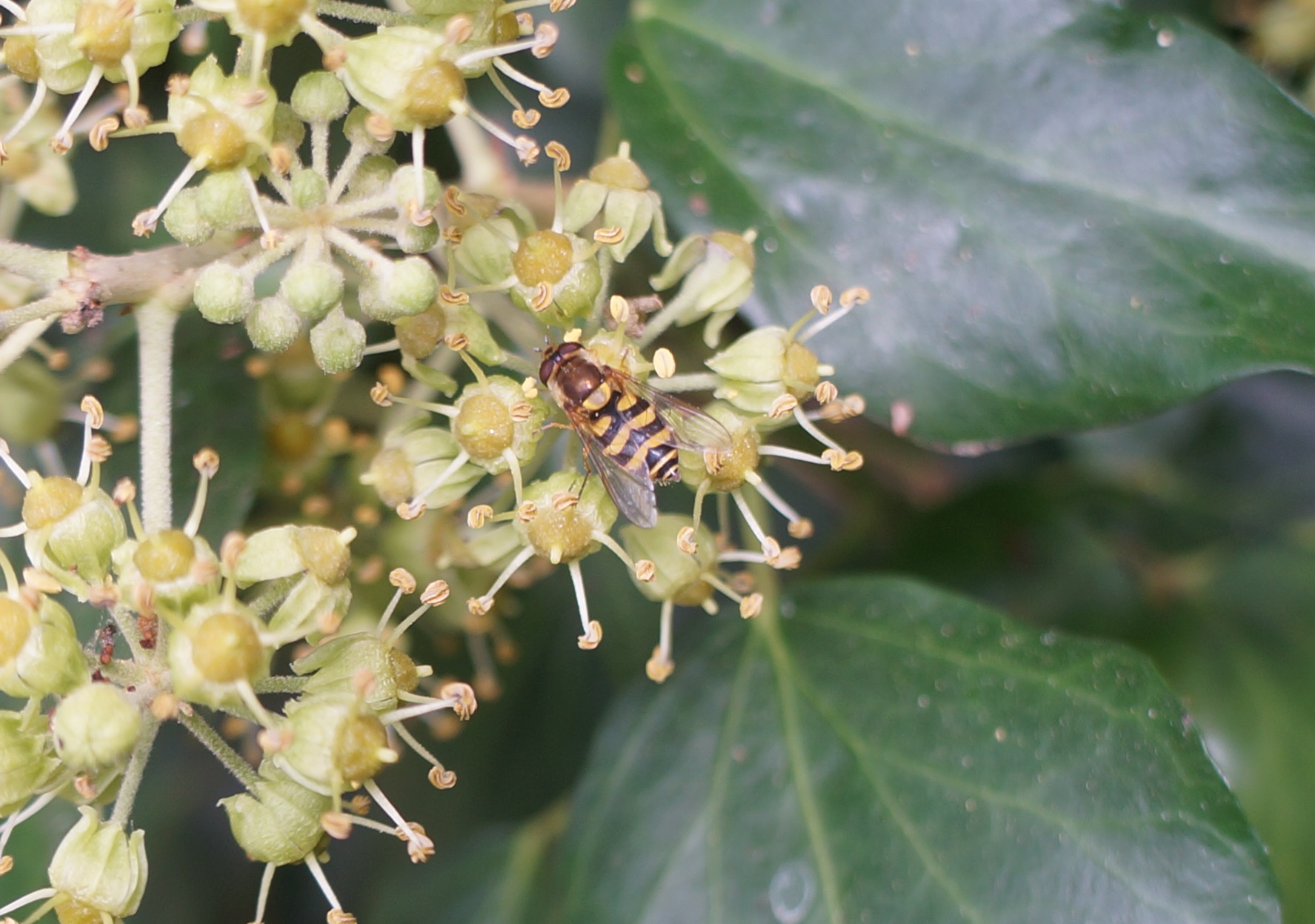
This wasp looks to have different markings from the other wasp photographed. Is it a wasp? Any thoughts?



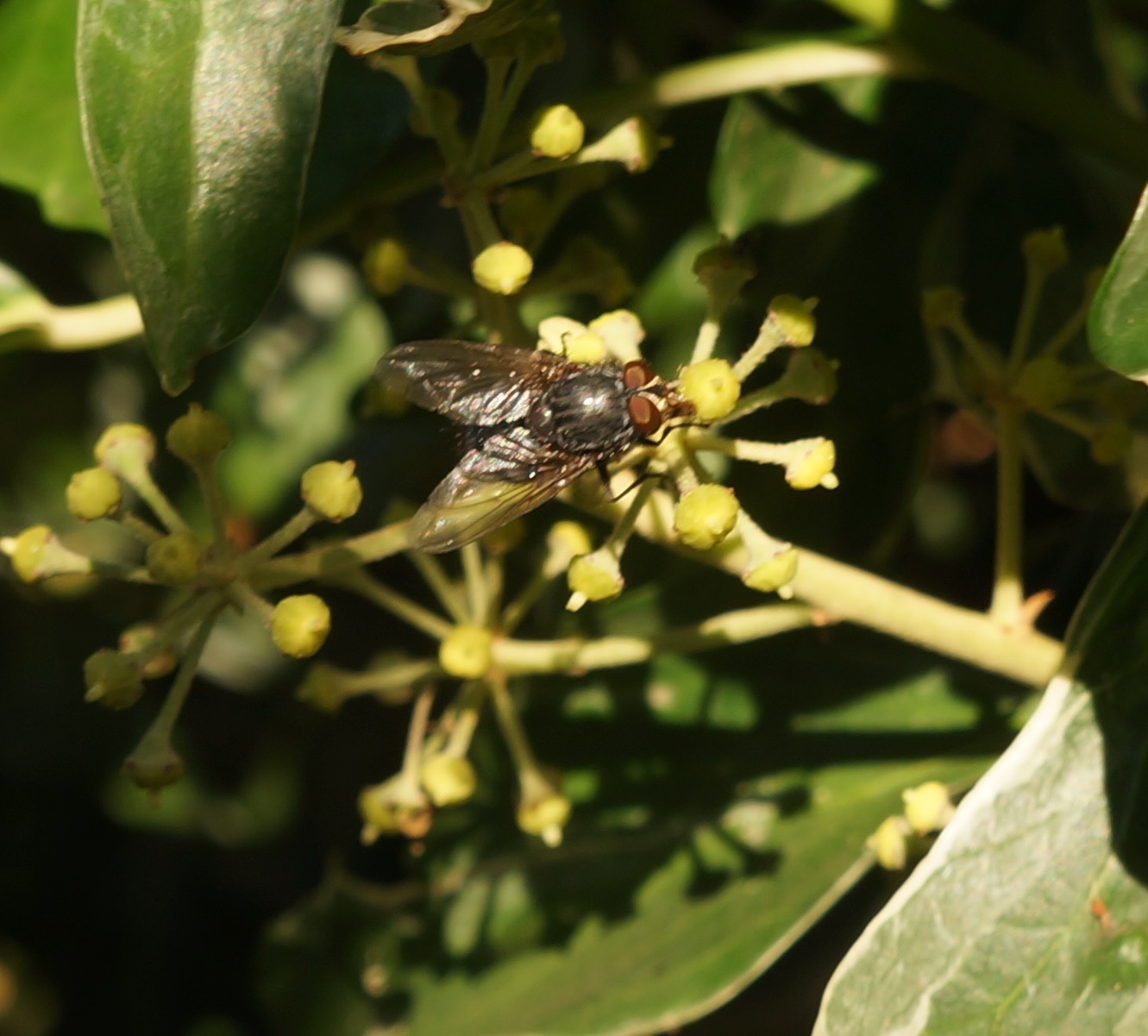
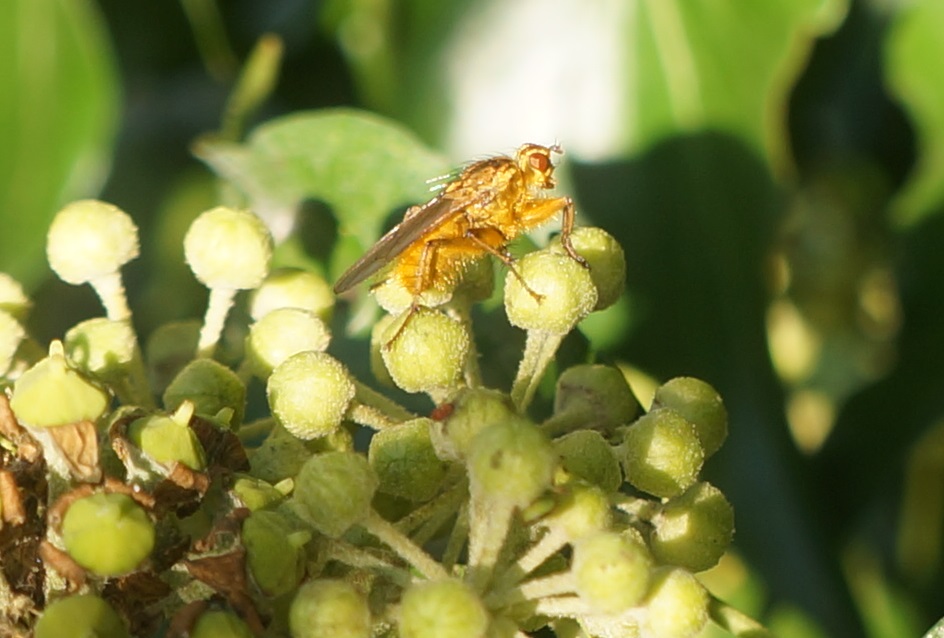
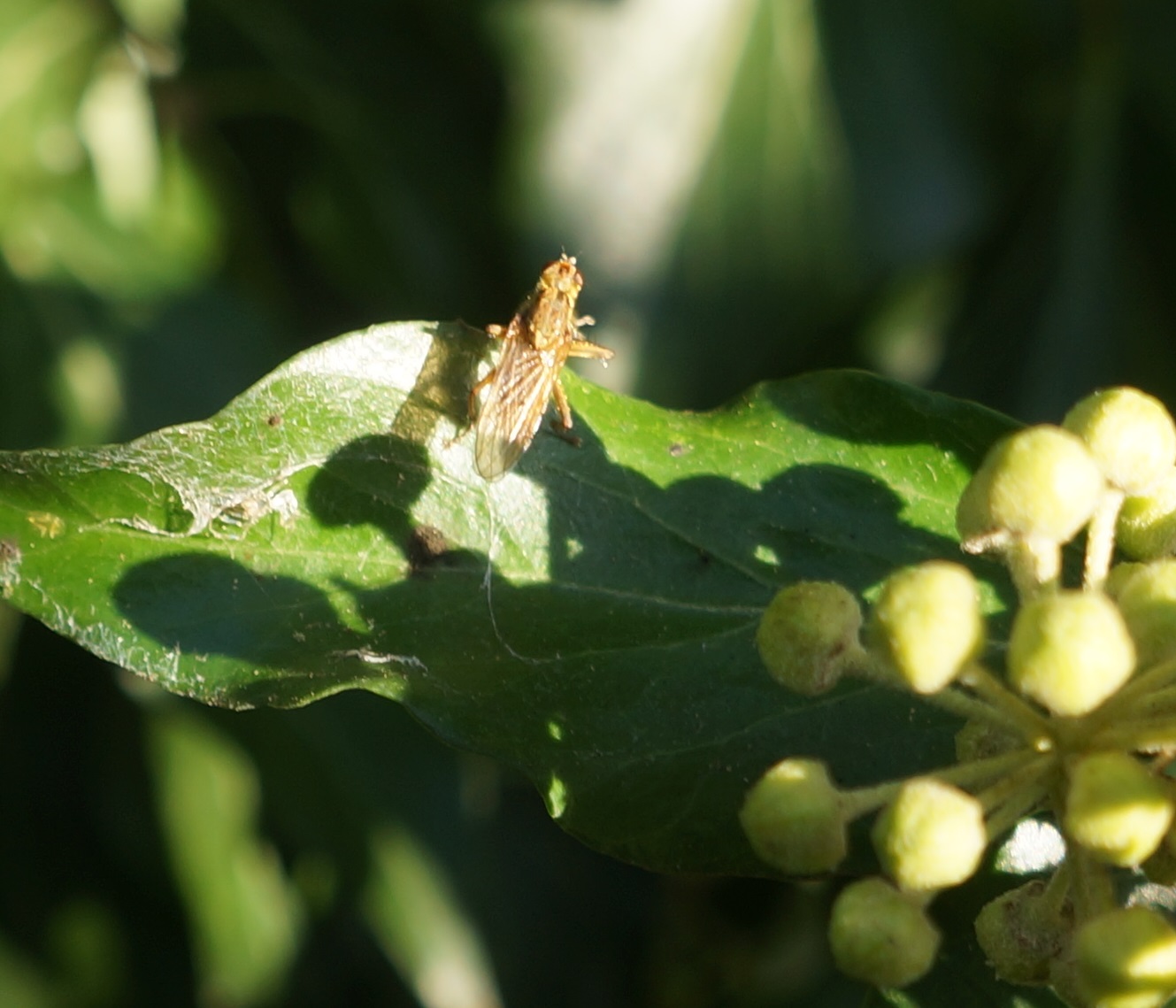
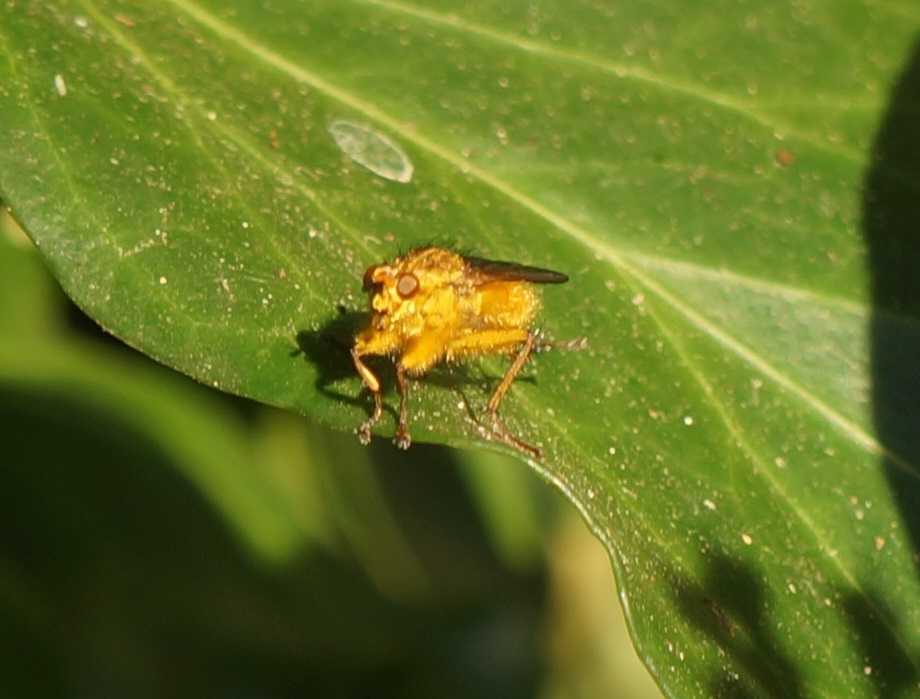
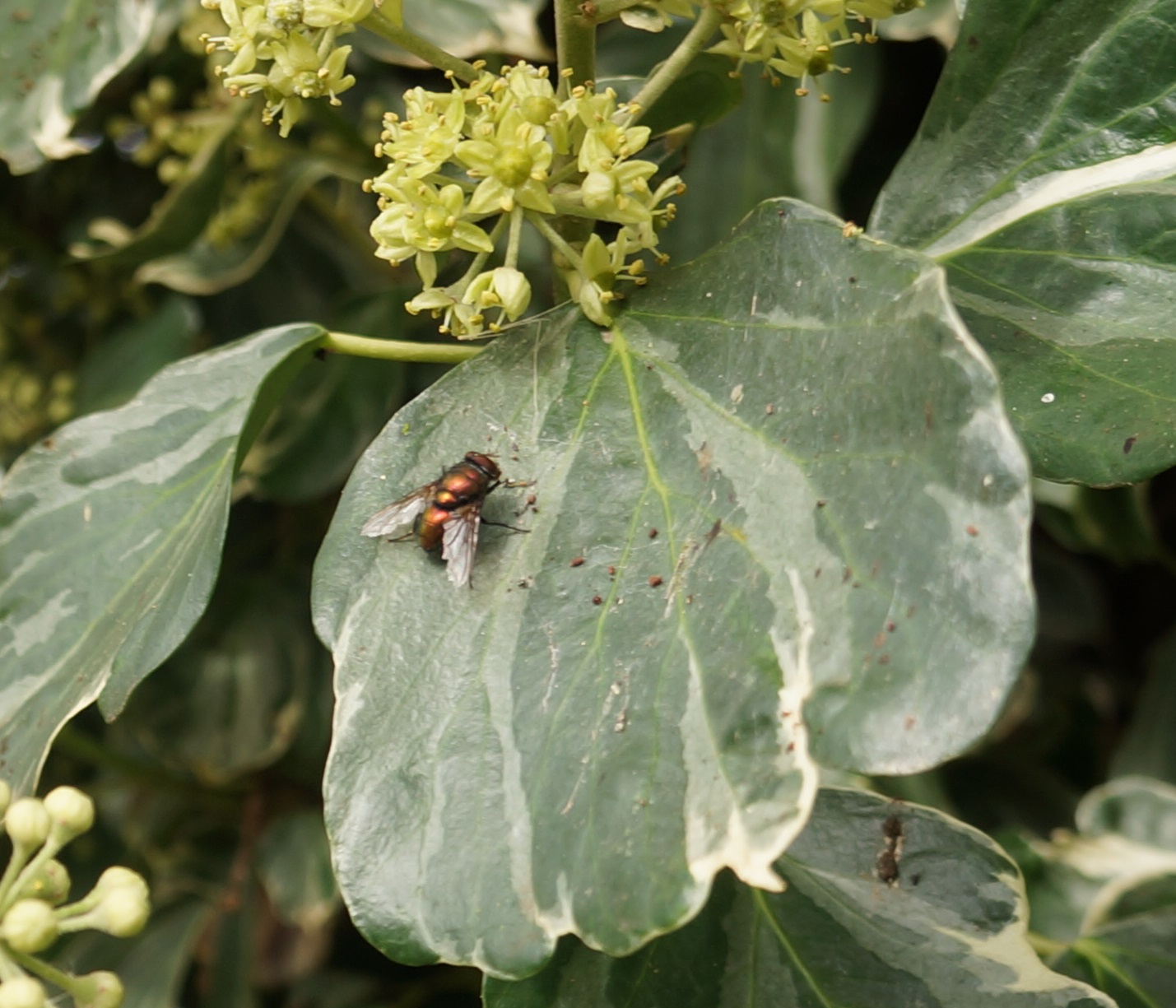
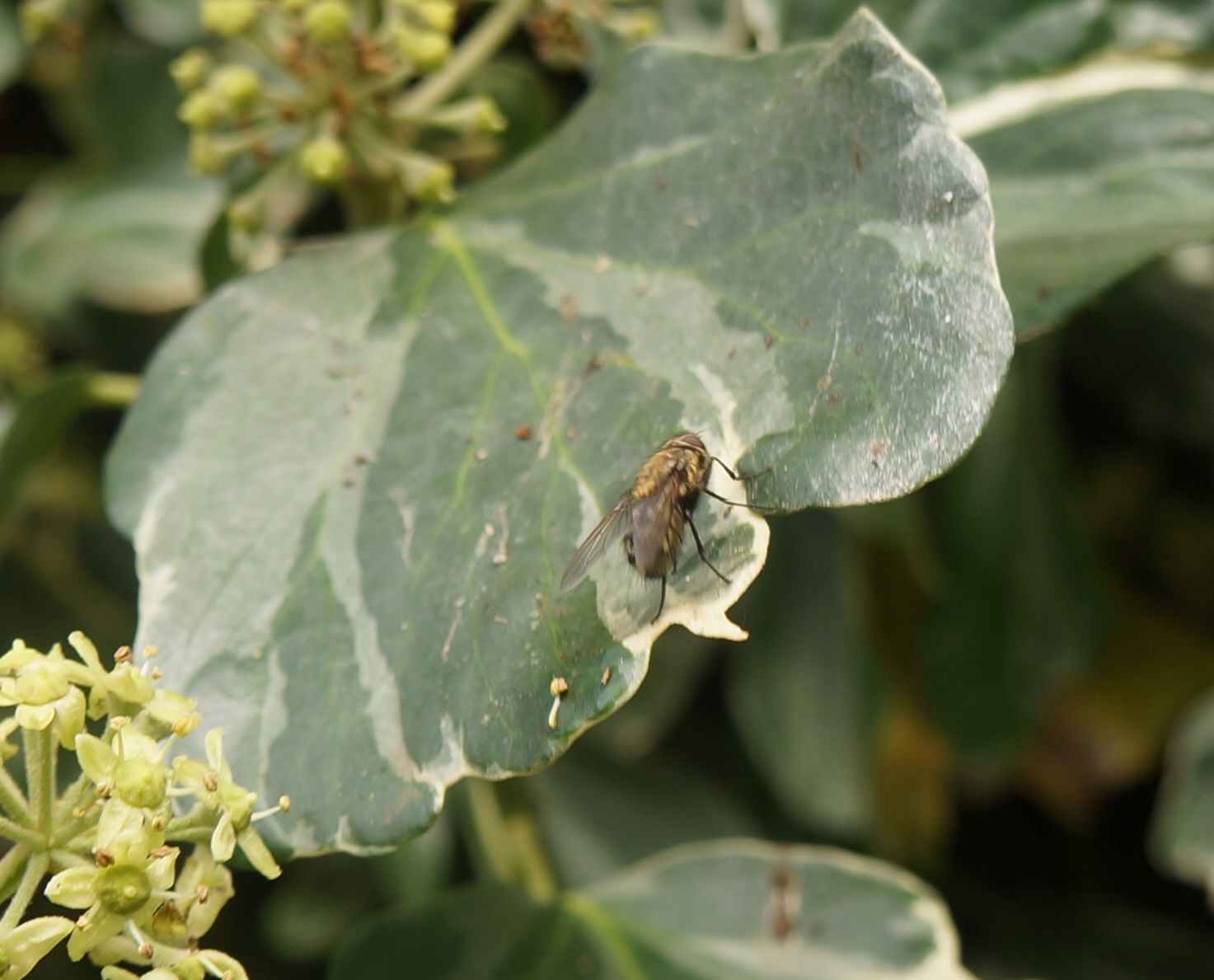
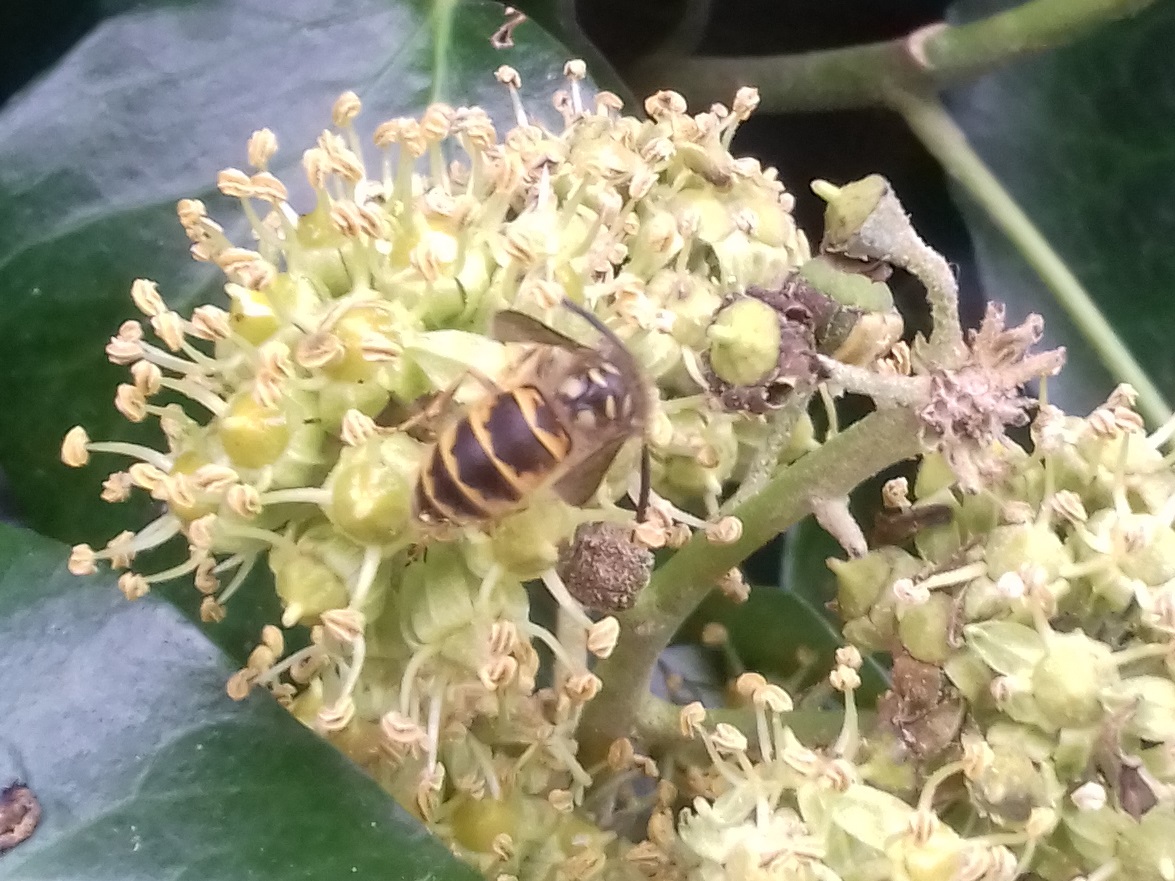














Harry Eve
November 2, 2017 at 11:52 am
I share Hugh Coakley’s enthusiasm for, “Lunch at the Ivy” where you may spot some celebrity visitors from time to time.
The Holly Blue butterfly lays its eggs on the flower buds and just a few weeks ago you could see Red Admirals and Commas enjoying the spread laid out for them in the Castle Gardens. It is also a great plant to have in a wildlife garden.
With regard to identifications, I hope there are some dipterists reading The Dragon, but I know that flies can be very difficult, if not impossible in most cases, to do from a photo. Also, you need to try to obtain a portrait of a social wasp’s face as there are several species that look very similar. Unfortunately, they tend to be somewhat camera shy.
I will respond again when I have had a chance to investigate more thoroughly.
Your informative responses always valued Harry. Thank you. Ed.
Harry Eve
November 3, 2017 at 4:56 pm
Second and fourth flies look like one of the dung flies. See http://www.naturespot.org.uk/taxonomy/term/22226?page=2 (Naturespot is a very helpful website even though it covers a different part of the country).Perhaps there are grazing animals nearby.
The first wasp is indeed a wasp – probably a Common Wasp (Vespula vulgaris). The second wasp (last photo) could be one of the Dolichovespula species.
Both wasps are social (at least towards their own kind!) – living in colonies with a queen.
The penultimate photo is of a hoverfly. I think it is one of the Syrphus species (possibly Syrphus ribesii – a hoverfly that “hums”). Many hoverfly species mimic bees and wasps.